Unlocking Donor-Advised Fund Giving - Lessons from St. Jude and Beyond
I am an honored member of the Giving Institute, a partner with the Lily School of Philanthropy at IU for the Giving USA Annual Report on Philanthropy. Over the past several years, the annual report of record regarding philanthropy has clearly shown an immense increase in Donor-Advised Funds (DAFs) as a mechanism for people to be charitable. They have become a major force in philanthropy, representing billions in charitable giving potential.
While many nonprofits struggle to tap into these funds, St. Jude Children’s Research Hospital has mastered the art of attracting DAF donors. Their approach—outlined in a recent Chronicle of Philanthropy article —offers key lessons for any nonprofit looking to maximize DAF contributions. St. Jude’s strategy for securing DAF gifts revolves around four core principles:
Making DAF Giving Easy and Visible – The organization prominently promotes DAF giving options across its website, newsletters, and fundraising campaigns. By integrating DAFs into their broader giving strategy, they ensure donors know how to contribute.
Building Relationships with Financial Advisors – St. Jude actively engages wealth managers, estate planners, and financial institutions like Fidelity and Schwab to educate them about the hospital’s mission and encourage DAF recommendations.
Personalized Outreach – Using donor data, the organization identifies and targets those with DAFs, tailoring communication to match donor interests and past giving behavior.
Framing Gifts as Investments – Rather than positioning DAF gifts as simple donations, St. Jude speaks to donors in terms of impact, demonstrating how their contributions drive medical research and patient care.
While St. Jude’s approach is exemplary, other research highlights additional ways nonprofits can attract DAF contributions:
Educating Donors About DAFs – Many donors don’t fully understand how DAFs work. Nonprofits can offer webinars, blog posts, or direct outreach to inform supporters about how to give via DAFs.
Collaborating with Community Foundations – Many donors establish DAFs through local community foundations rather than major financial firms. Partnering with these organizations can unlock new funding opportunities.
Highlighting Specific Projects – DAF donors often want to support targeted initiatives. Instead of a generic ask, nonprofits should present clear funding opportunities with measurable outcomes.
Recognizing DAF Donors Thoughtfully – Since DAF gifts are issued by a financial institution, acknowledging the donor (rather than just the fund) is crucial for stewardship and long-term relationships.
What all of this shows is that a specific strategy for DAF’s is now almost required. Nonprofits can’t just operate on the hope method—"I hope DAF owners give to us.” By adopting these strategies, nonprofits can unlock the full potential of DAF giving, ensuring a sustainable and impactful funding stream for years to come. And for those that do not, they are leaving money on the table---and possibly hurting their nonprofit’s impact on the community.


